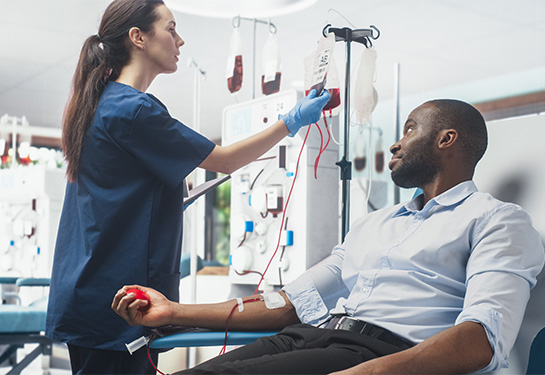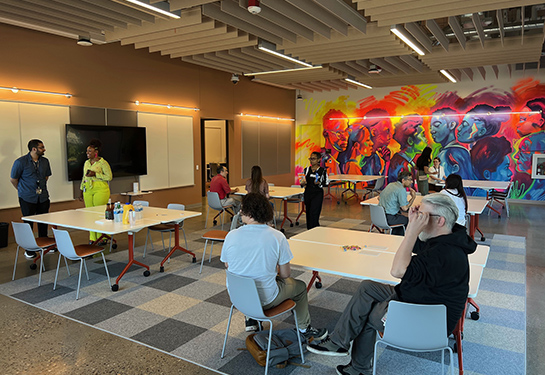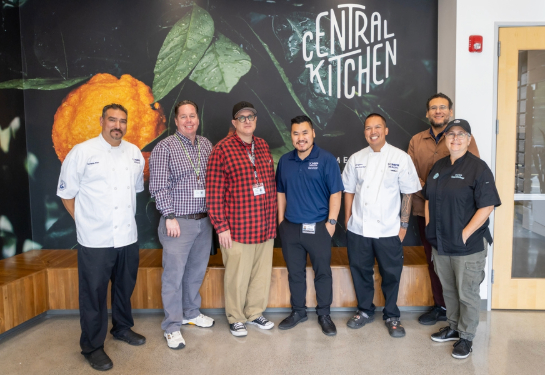New study points to racial and social barriers that block treatment for multiple myeloma
A UC Davis Health study reveals persistent racial and social disparities preventing access to autoHCT, a common bone marrow transplant treatment to halt the progression of multiple myeloma.
An analysis of data from three California health care organizations, published in Clinical Lymphoma, Myeloma & Leukemia, showed that Black myeloma patients were less likely to receive autoHCT. This was despite having a greater risk of developing the cancer than other racial or ethnic groups. Patients using Medicaid, Medicare, or no insurance in California also accessed the treatment less than those with other insurance options.
“It’s important that we remain aware that these disparities exist in our state and our health care system, since they do affect clinical outcomes for patients,” said Naseem Esteghamat, a UC Davis assistant professor of malignant hematology, cellular therapy, and transplantation. “Now, we want to move beyond recognizing that such disparities exist and address barriers to cancer patients receiving care.”
What is Multiple myeloma and how is its treated?
Multiple myeloma is a cancer of plasma cells found in bone marrow. These cells secrete disease-fighting antibodies as part of the immune system. In patients with myeloma, cancerous plasma cells grow out of control and crowd out healthy cells, causing fractured bones, bruising, fatigue, and weakness.
While myeloma isn’t curable, Esteghamat noted that it’s highly treatable, with treatment goals including inducing remissions, increasing progression-free intervals, and overall survival. First-line treatments may include autologous hematopoietic cell transplantation, or autoHCT, if patients respond well to initial chemotherapy.
“With autoHCT, we collect a patient’s healthy stem cells and freeze them. Then, they receive a high dose of chemotherapy to eradicate residual myeloma cancer cells,” explained Esteghamat, who is affiliated with UC Davis Comprehensive Cancer Center.
High-dose chemotherapy wipes out healthy bone marrow cells, impairing a patient’s immune system and making them more prone to infections.
“Following that dose of chemotherapy, we supply them with their own stems cells intravenously, which helps them repopulate the cells of their bone marrow and immune system,” she explained.
Stem cell transplantation is associated with slowed disease progression and low treatment-related death rates. It’s also linked to better overall survival rates in comparison with other myeloma treatments. The problem, according to Esteghamat’s research, is lack of access to autoHCT.
Sociodemographic factors affect autoHCT usage
Previous research has uncovered lower rates of autoHCT usage related to socioeconomic status and race. Esteghamat was inspired by her mentor and study co-author, Theresa Keegan, to determine if those disparities in treatment rates persisted in spite of increased education about autoHCT’s effectiveness. Keegan is a professor of medicine and UC Davis Comprehensive Cancer Center member.
The research team used data from the California Cancer Registry (CCR), the Center for International Blood and Marrow Transplant Research, and the California Patient Discharge Database. They studied rates of autoHCT usage in patients diagnosed with myeloma between 1991 and 2016. The CCR provided demographic information, such as race, ethnicity, and insurance status, along with neighborhood socioeconomic status (nSES): an aggregate of education, employment status, poverty, and other measurements.
Of the 29,109 patients diagnosed with myeloma between 1991 and 2016, 18.9% received autoHCT. Despite having myeloma rates almost twice that of white patients, Black/African American patients received a lower proportion of the transplant therapy — 15.8% — than other racial and ethnic groups. Rates declined after 2005. Neighborhood socioeconomic status also played a role in treatment options, with higher rates of autoHCT usage among patients residing in higher nSES neighborhoods.
At 28.4%, the proportion of patients receiving transplant therapy was higher among those with private or military health insurance than those with Medicare, Medicaid, or no insurance. Older age at diagnosis or comorbidities — health issues in addition to myeloma — also decreased the likelihood that a patient received the treatment.
While the study was able to identify socioeconomic disparities in myeloma treatment options, Esteghamat and her colleagues could only speculate about their reasons.
“One previously published study showed that after patients were referred to a transplant center, there were no more disparities in treatment based on race or ethnicity, which means that we need to determine which social barriers are preventing access to these centers,” Esteghamat said.
Financial burdens, lack of caregiver support or transportation, physician bias, referral bias, cultural beliefs, and other factors can contribute to lack of access to autoHCT, according to the study authors. They emphasized the need for more research into how Medicare and Medicaid plans affect patient evaluation for autoHCT eligibility, frequency of referrals to transplant centers, and additional impacts of insurance options. The authors added that mitigating social and economic barriers can lead to more equitable use of an effective cancer treatment, and better outcomes for patients.
UC Davis coauthors of this study are Ann Brunson, Julianne J.P. Cooley, Aaron S. Rosenberg, Renata Abrahão, and Ted Wun of the Comprehensive Cancer Center. Other coauthors include Sara J. Schonfeld, Bryan Valcarcel, and Lindsay M. Morton of the National Cancer Institute; Christa L. Meyer of the National Marrow Donor Program/Be The Match; Jeffery J. Auletta of the National Marrow Donor Program/Be The Match and Nationwide Children’s Hospital; and Lori Muffly of Stanford University.
UC Davis Comprehensive Cancer Center
UC Davis Comprehensive Cancer Center is the only National Cancer Institute-designated center serving the Central Valley and inland Northern California, a region of more than 6 million people. Its specialists provide compassionate, comprehensive care for more than 100,000 adults and children every year and access to more than 200 active clinical trials at any given time. Its innovative research program engages more than 240 scientists at UC Davis who work collaboratively to advance discovery of new tools to diagnose and treat cancer. Patients have access to leading-edge care, including immunotherapy and other targeted treatments. Its Office of Community Outreach and Engagement addresses disparities in cancer outcomes across diverse populations, and the cancer center provides comprehensive education and workforce development programs for the next generation of clinicians and scientists. For more information, visit cancer.ucdavis.edu.




